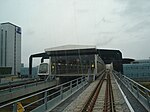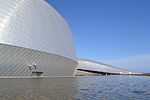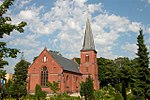Japan Air Lines food poisoning incident
1975 disease outbreaks1975 in DenmarkAccidents and incidents involving the Boeing 747Aviation accidents and incidents in 1975Aviation accidents and incidents in Denmark ... and 7 more
Coca-ColaFebruary 1975 events in EuropeFood safety scandalsFoodborne illnessesIndustrial hygieneJapan Airlines accidents and incidentsStaphylococcus

On February 3, 1975, 197 people fell ill aboard a Japan Air Lines Boeing 747 en route from Anchorage, Alaska, to Copenhagen, Denmark, after consuming an in-flight meal contaminated with Staphylococci. One hundred and forty-four people needed hospitalization, making it the largest food poisoning incident aboard a commercial airliner.
Excerpt from the Wikipedia article Japan Air Lines food poisoning incident (License: CC BY-SA 3.0, Authors, Images).Japan Air Lines food poisoning incident
Kragevej, Tårnby Kommune
Geographical coordinates (GPS) Address Nearby Places Show on map
Geographical coordinates (GPS)
| Latitude | Longitude |
|---|---|
| N 55.618055555556 ° | E 12.656111111111 ° |
Address
Kragevej
Kragevej
2791 Tårnby Kommune
Capital Region of Denmark, Denmark
Open on Google Maps









